Grab some height: Volcano "La Soufrière"
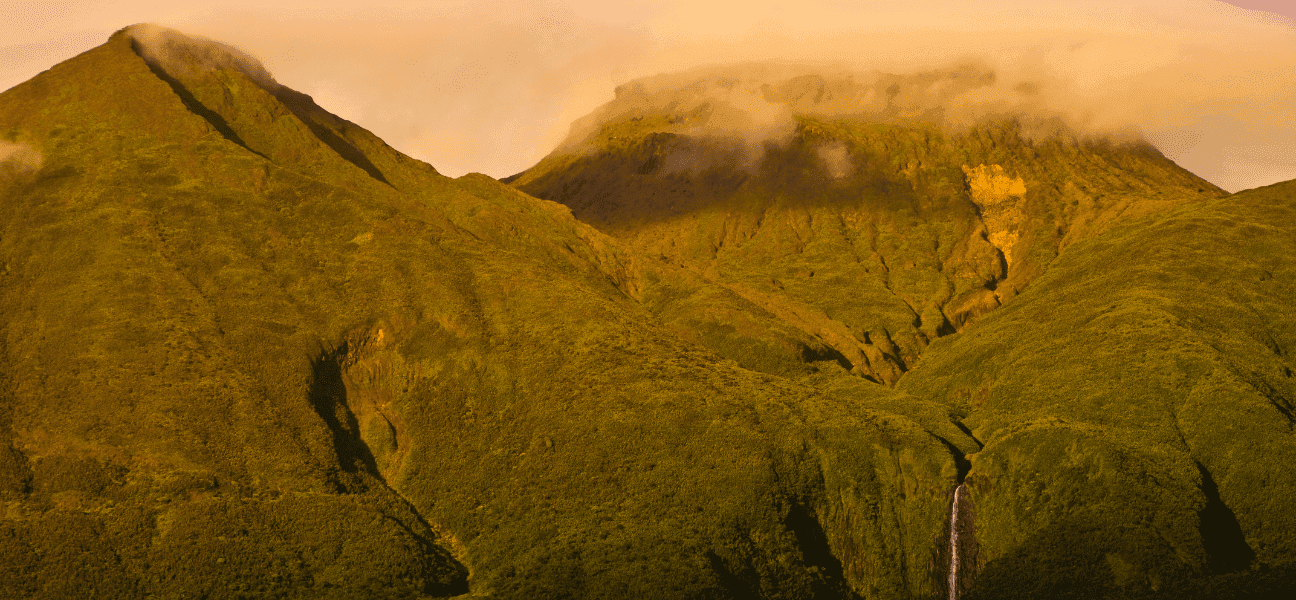
La Soufrière, also known as the "Old Lady," is the most iconic active volcano in Guadeloupe. Located on the island of Basse-Terre, it rises to an altitude of 1,467 meters, making it the highest point in the Lesser Antilles. This volcanic giant attracts thousands of visitors each year, drawn by its natural beauty, geological significance, and adventurous spirit. With its mysterious fumaroles, hiking trails, and unique biodiversity, La Soufrière is much more than just a volcano; it is the beating heart of Guadeloupe’s natural wonders.
La Soufrière: An Active Volcano at the Heart of Basse-Terre
La Soufrière is part of the volcanic complex of the Basse-Terre mountain range, a region known for its lush tropical vegetation and rugged terrain. La Soufrière is a stratovolcano, a type known for its explosive eruptions and complex geological formations. Although not in constant eruption, La Soufrière remains an active volcano. Since its last major eruption in 1976, it has been under constant observation by volcanologists to ensure the safety of the area. This ongoing monitoring allows visitors to explore the volcano in a secure environment while also understanding its dynamic nature.
A Site of Scientific Study
La Soufrière serves as an important research site for scientists. It is regularly monitored for temperature variations, gas emissions, and earth movements. The Guadeloupe Volcanological and Seismological Observatory, located in Gourbeyre, conducts continuous surveillance to detect any volcanic activity. This level of monitoring reassures visitors, making the volcano a safe and exciting destination for exploration.
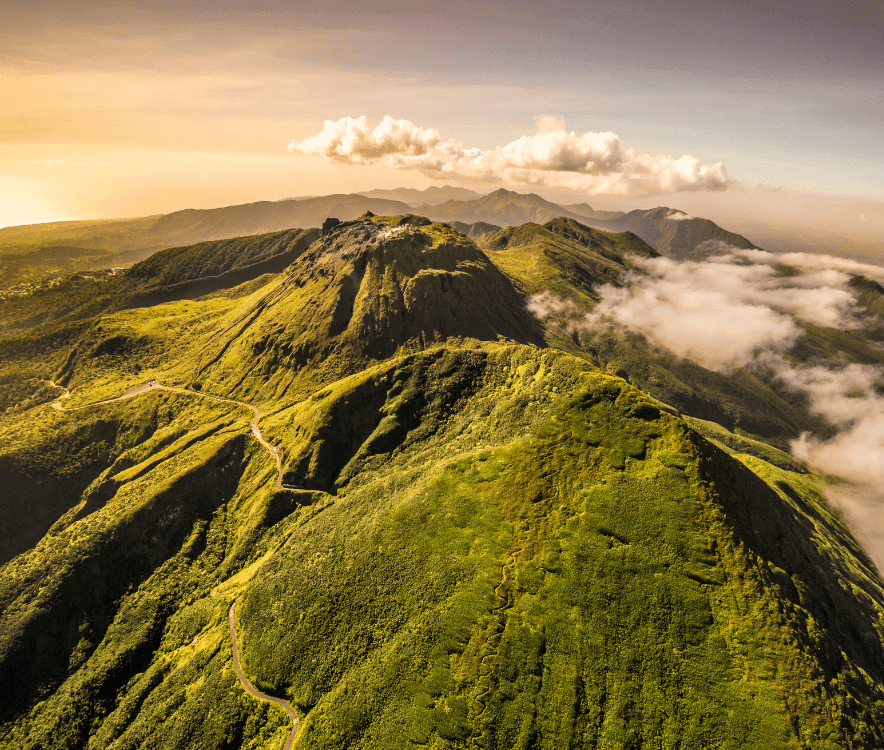
An Unforgettable Hike at La Soufrière
Climbing to the summit of La Soufrière is an unforgettable adventure. The journey typically starts at the Bains Jaunes, a natural hot spring located at about 950 meters in altitude. The well-marked trail leads through lush vegetation and gradually transitions to a more rocky landscape as you ascend.
The Starting Point: The Bains Jaunes
The most popular starting point for the ascent is the Bains Jaunes, a natural thermal spring where hikers can enjoy a relaxing dip before or after their excursion. This mineral-rich hot water, heated by underground volcanic activity, provides a well-earned moment of relaxation after the hike. From there, the trail winds through the rainforest, where towering trees, giant ferns, and abundant biodiversity greet adventurers.
The Climb: A Journey Through Untamed Wilderness
The hike itself takes between two and three hours, depending on your pace. The path crosses a variety of landscapes, from tropical forests to lava fields and rocky plateaus. As you climb higher, the air cools, and the vegetation becomes sparser. The final stretch, steeper and more challenging, leads to the summit, where fumaroles emit from cracks in the ground, a constant reminder that La Soufrière is very much alive.
Breathtaking Views from the Summit
On clear days, the summit of La Soufrière offers panoramic views that are simply breathtaking. You can see the surrounding islands of the Guadeloupe archipelago, and on a good day, distant islands like Dominica are also visible. The massive caldera, a large volcanic depression, is another spectacular sight. However, weather conditions can change quickly at this altitude, and the summit is often shrouded in clouds. To increase your chances of enjoying the view, it's recommended to start the hike early in the morning.
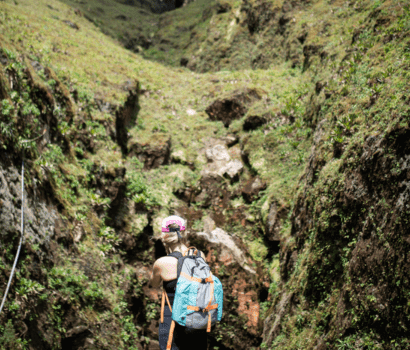
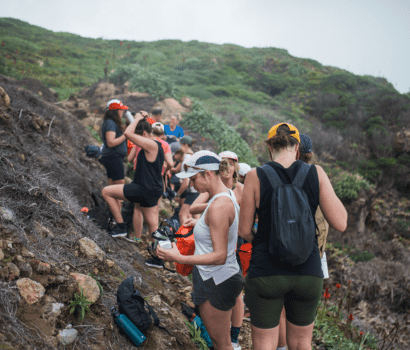
La Soufrière: A Sanctuary of Biodiversity
The volcano is at the heart of Guadeloupe National Park, a protected area rich in unique flora and fauna. The diverse habitats—from rainforest to rocky outcrops and thermal springs—create a unique environment where nature thrives.
A Unique Flora
As you hike toward the summit, you will pass through various levels of vegetation. The lower part of the trail is dense with tropical rainforest, including towering trees, giant ferns, and wild orchids. Higher up, the vegetation becomes sparser, but you’ll encounter plants that have adapted to the altitude and the harsh conditions near the summit.
An Exceptional Fauna
La Soufrière is also home to a variety of bird species, including the famous Guadeloupe Woodpecker, endemic to the archipelago. Birdwatchers might also spot hummingbirds, yellow-billed thrushes, and other rare species. The region is also rich in insects and amphibians, adding to the area’s diverse ecosystem.
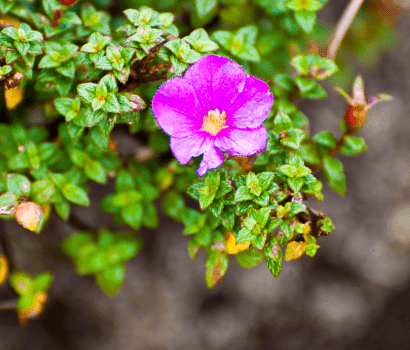
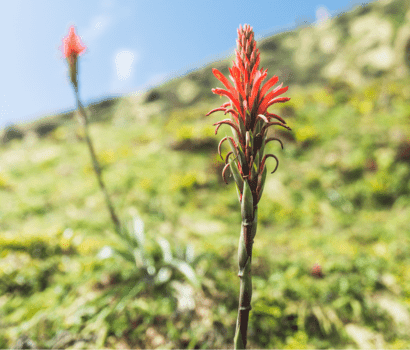
Fascinating Geological Riches
In addition to its biodiversity, La Soufrière offers a wealth of geological features. Over millennia, the volcano has shaped the landscape of Basse-Terre with its lava flows, solidified lava domes, and constantly active fumaroles. The fumaroles are particularly impressive: jets of steam rise from cracks in the earth, creating an eerie atmosphere at the summit.
Thermal Springs and Fumaroles
Thermal springs like the Bains Jaunes are another manifestation of the volcanic activity below the surface. These springs are known for their skin and muscle-relaxing properties, making them a popular stop for hikers. The fumaroles, with their distinctive sulfur smell, are a constant reminder that La Soufrière is still an active volcano. While the odor may be strong, it is an essential part of the experience.
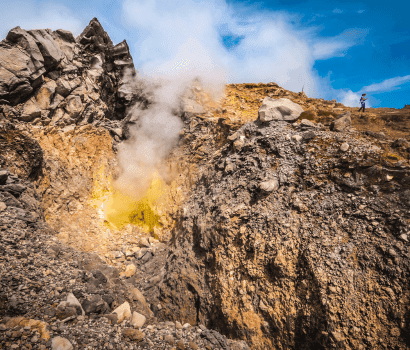
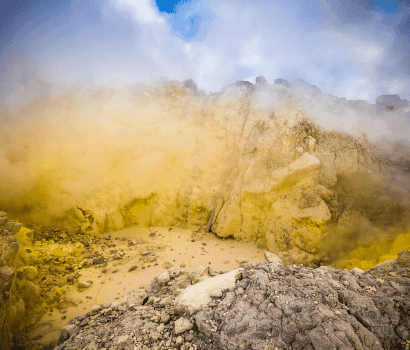
Preparing for Your Ascent of La Soufrière
If you’re planning to tackle this adventure, here are some practical tips for a successful hike:
Gear: Wear sturdy hiking shoes with good grip. The weather can change quickly, so bring a waterproof jacket.
Start Time: It’s best to start early in the morning to avoid clouds at the summit and enjoy the best views.
Hydration and Food: Bring plenty of water and snacks to sustain yourself during the climb.
Respect Nature: La Soufrière is a protected area. Be mindful to leave no trace behind.






